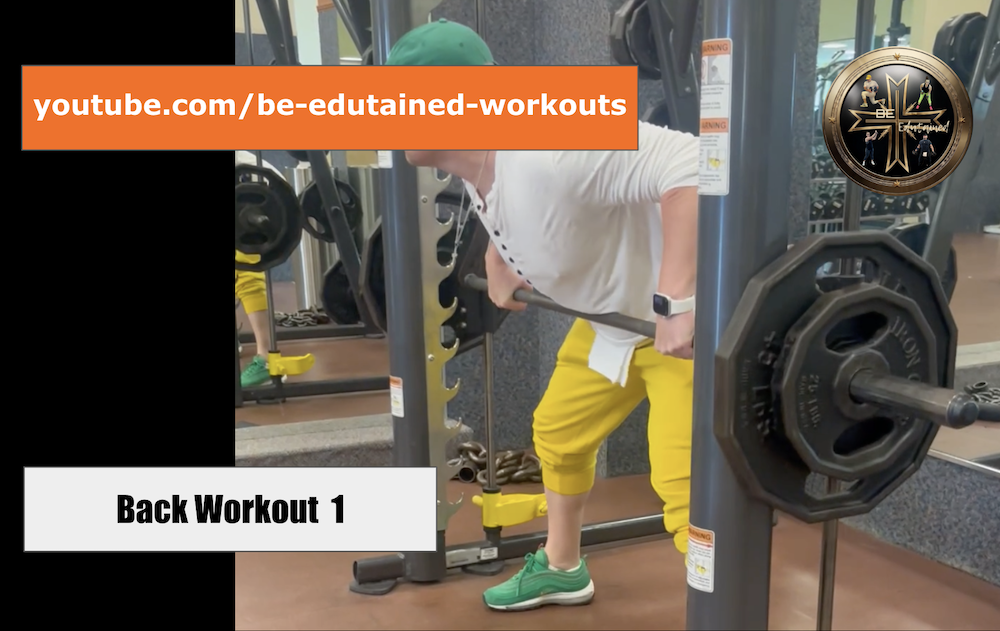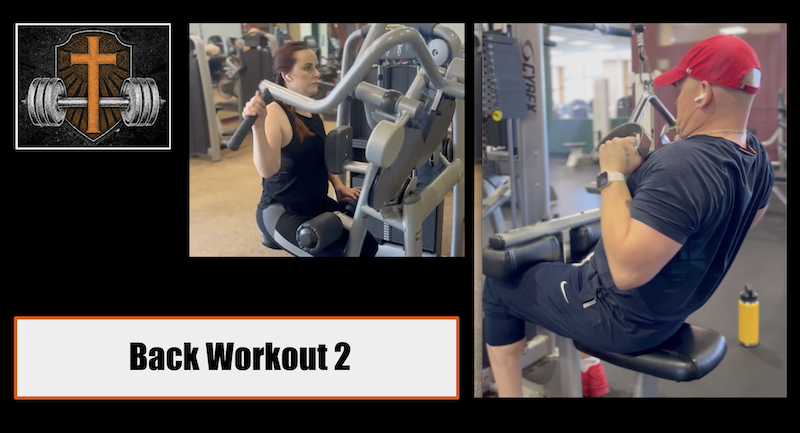Back Workouts
#BackWorkouts

Back Workout 3 – Coming Soon
View the Workouts
Instructions:
Warm Up
✅ Start with a weight that is easy and does not cause strain or heavy breathing.
Reverse Pyramid
✅ On your first heavy weight: Do a weight that you can do 4-6 reps. Then decrease the weight by 10% for each of the following reps. Once you hit the max you can do, increase your weight. Rinse and repeat as you get stronger.
Rest Pause
✅ Rest Pause is 4 Rounds. The first set is larger and the other three are smaller. The weight stays the same for all rounds. If you can do 12 Reps and 6 Reps with only 15 seconds of rest easily, then increase the Rep count to 14 and 7.
Abs
✅ You have Two Options: Option 1: You can do 1 Set of 60 OR Option 2: 3 Sets of 20 (you can mix it in between the exercises as you do the workout)
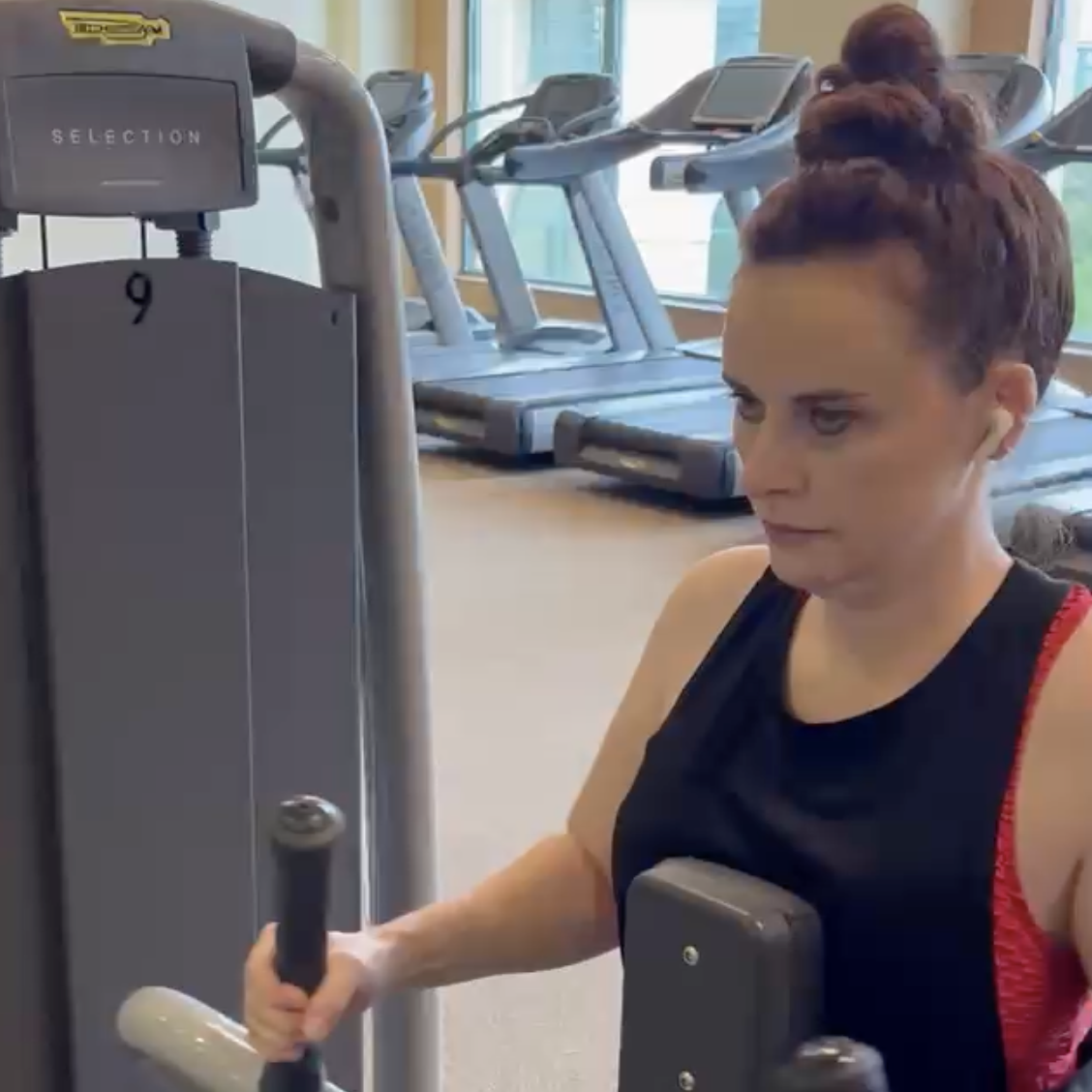
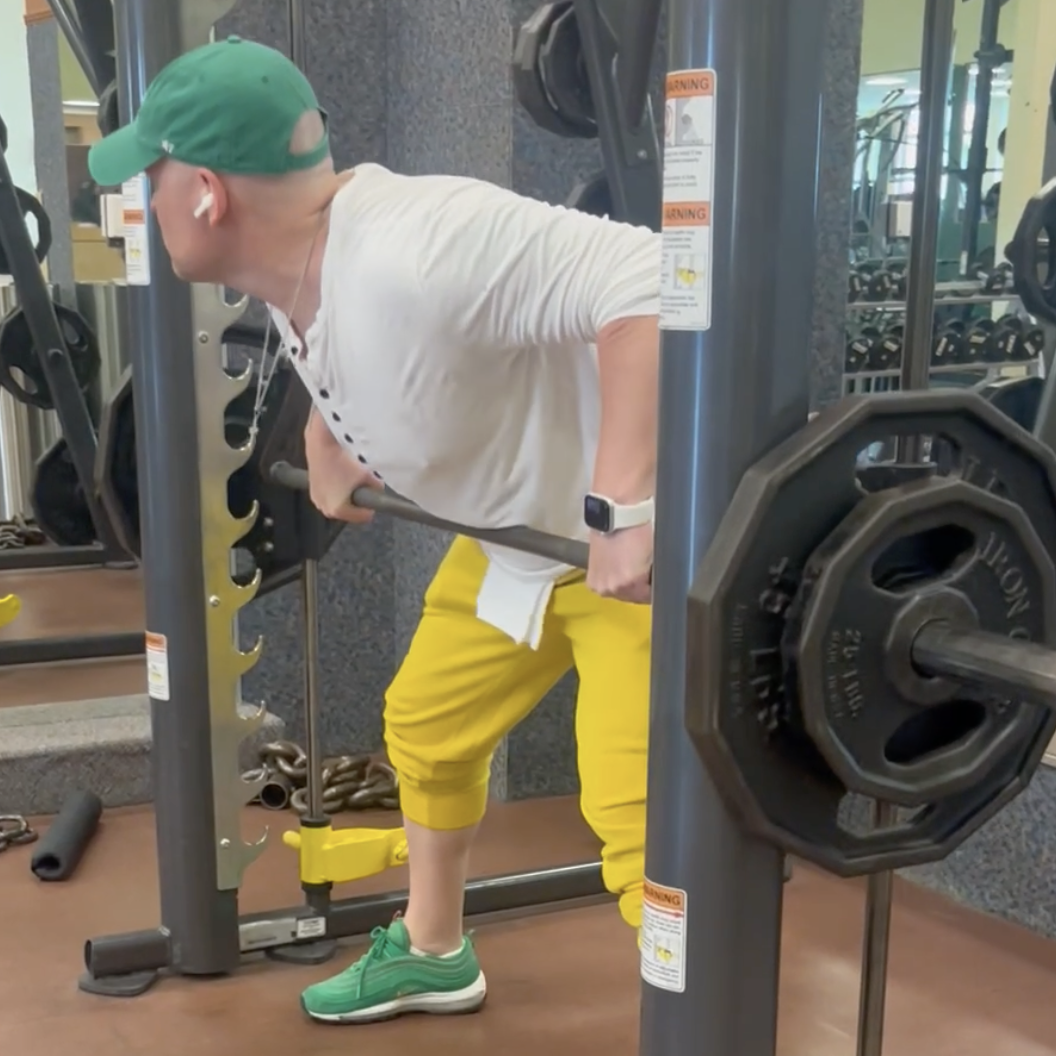
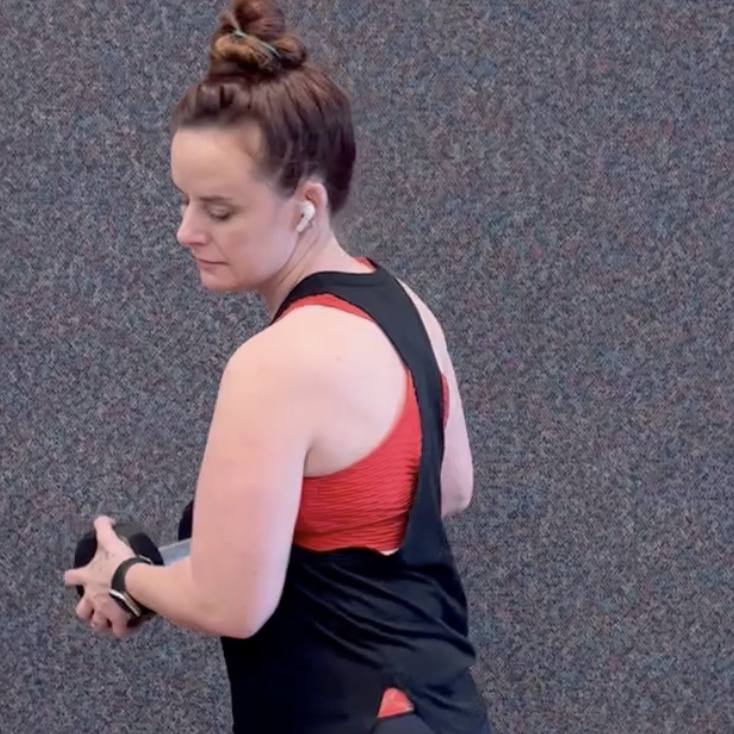
Back Workouts
The Importance of Back Workouts: Building Strength, Preventing Injury, and Enhancing Overall Fitness
Back workouts are often overlooked in favor of more visible muscle groups like the chest, arms, or abs. However, a strong and well-developed back is not only crucial for a balanced physique but also plays an essential role in overall body function. Whether you’re an athlete, a fitness enthusiast, or someone looking to improve your posture and prevent injuries, incorporating back workouts into your fitness routine is vital for both health and performance. In this article, we’ll explore the many reasons why back workouts are essential and how they can help you reach your fitness goals.
Why the Back is Important
The back is composed of several major muscle groups, including the trapezius, latissimus dorsi, rhomboids, and the spinal erectors. These muscles work together to support the spine, allow for a wide range of movements, and help maintain posture. A weak or underdeveloped back can lead to poor posture, increased risk of injury, and imbalances in the body that affect overall performance in both daily life and athletic activities.
Improving Posture
One of the primary benefits of back workouts is the improvement of posture. In today’s modern world, many people spend hours sitting at desks, looking down at smartphones, or slouching on couches. These habits can lead to rounded shoulders, forward head posture, and a slouched upper body, all of which can cause discomfort and even long-term health issues.
Strengthening the muscles of the upper back, particularly the rhomboids and trapezius, helps pull the shoulders back and align the spine. Exercises like rows, pull-ups, and reverse flyes are excellent for correcting postural imbalances and ensuring that your upper body remains upright and properly aligned. Good posture not only enhances your appearance but also reduces the risk of developing musculoskeletal problems later in life.
Preventing Injury
A strong back is crucial for injury prevention, particularly in the lower back region. The muscles of the back, including the spinal erectors, work to stabilize the spine during movement. If these muscles are weak, the likelihood of injury increases, especially when lifting heavy objects or performing dynamic activities.
Lower back pain is one of the most common complaints among adults, and many of these issues stem from weak muscles or poor movement mechanics. Back workouts that target the spinal erectors and core muscles help create a strong foundation, ensuring that the spine remains stable during various activities. Deadlifts, hyperextensions, and good mornings are great exercises that build strength in the lower back, promoting stability and reducing the risk of injury.
Enhancing Athletic Performance
Whether you’re a weightlifter, runner, swimmer, or participate in any other sport, a strong back is essential for optimal performance. The back muscles are involved in almost every major movement, from lifting weights to jumping and running. For example, the latissimus dorsi, or lats, are crucial for pulling movements, making them key muscles in exercises like pull-ups, rows, and deadlifts.
In many sports, the back also plays a role in rotational movements, such as swinging a golf club or throwing a baseball. Strengthening the back muscles not only enhances power and performance but also improves agility and coordination. For athletes, a balanced workout routine that includes back exercises can help elevate their game and prevent overuse injuries that result from focusing too heavily on one muscle group.
Supporting Functional Movements
Functional fitness refers to exercises that train your body to perform everyday movements efficiently and safely. The back muscles are essential for functional fitness, as they are involved in actions like lifting, carrying, bending, and reaching. These movements are critical for day-to-day activities, whether you’re picking up groceries, moving furniture, or playing with your children.
Back workouts that mimic real-life activities, such as bent-over rows, deadlifts, and farmer’s carries, help strengthen the muscles used in these tasks. As a result, you’ll be better equipped to handle physical challenges with ease and less likely to experience strain or injury during routine activities.
Promoting Muscle Balance
Muscle imbalances occur when one muscle group becomes stronger or more developed than its opposing group. For example, many people focus heavily on chest exercises (like bench presses) without giving equal attention to their back muscles. This imbalance can lead to rounded shoulders, poor posture, and an increased risk of injury.
By incorporating back workouts into your routine, you can create a more balanced physique and reduce the likelihood of injury due to muscular imbalances. A balanced workout routine ensures that both the front and back of your body are equally strong and capable of supporting your movements, whether you’re lifting weights, running, or simply going about your daily activities.
Aesthetics and Physique
For those who are focused on building an impressive physique, back workouts are essential. A strong and well-developed back creates the “V-taper” look, where the upper body appears wide at the shoulders and narrows down at the waist. This creates a more symmetrical and athletic appearance.
Exercises like pull-ups, lat pulldowns, and rows target the lats, helping to build the width of the back, while deadlifts and shrugs focus on developing the traps and spinal erectors, creating thickness in the back. A well-rounded back workout will not only enhance your strength but also contribute to an aesthetically pleasing and balanced physique.
Boosting Overall Strength
The back muscles play a key role in overall strength, especially when it comes to compound movements like deadlifts, squats, and overhead presses. These exercises require the engagement of the back muscles to stabilize the spine and support the entire body during the lift. A strong back allows you to lift heavier weights, improving your performance in both strength training and other athletic activities.
Back workouts that target the major muscle groups of the back, such as rows, pull-ups, and deadlifts, can significantly boost your overall strength. As your back muscles become stronger, you’ll find that other exercises become easier, and you’ll be able to progress more quickly in your fitness journey.
Supporting Core Strength
While many people associate core strength with the abdominals, the muscles of the back are also an essential part of the core. A strong core is crucial for stabilizing the spine, maintaining balance, and preventing injury during various movements. The back muscles, particularly the spinal erectors, work alongside the abdominal muscles to provide support for the entire torso.
By incorporating back exercises into your routine, you’re not only strengthening your back but also enhancing your core stability. This is particularly important for exercises like squats, deadlifts, and overhead presses, which require a strong and stable core to perform correctly. A strong core will also improve your balance and coordination, making it easier to perform both everyday tasks and athletic movements.
Key Back Exercises to Include in Your Routine
If you’re ready to start building a stronger back, here are some key exercises to incorporate into your workout routine:
Deadlifts
Deadlifts are one of the most effective exercises for building overall strength, particularly in the lower back, glutes, and hamstrings. This compound movement engages multiple muscle groups, making it an excellent choice for improving functional strength and preventing injury.
Pull-Ups
Pull-ups are a classic back exercise that targets the lats, rhomboids, and traps. This bodyweight movement is great for building upper back strength and developing the “V-taper” look. If you can’t perform a full pull-up yet, you can start with assisted pull-ups or lat pulldowns to build the necessary strength.
Bent-Over Rows
Bent-over rows are a versatile back exercise that targets the lats, rhomboids, and traps. This movement can be performed with a barbell, dumbbells, or a resistance band, making it easy to incorporate into any workout routine. Bent-over rows help improve posture and build strength in the upper back.
Lat Pulldowns
Lat pulldowns are a great exercise for isolating the lat muscles and building upper back strength. This exercise is particularly useful for those who are working toward performing pull-ups but aren’t quite there yet.
Face Pulls
Face pulls are an excellent exercise for targeting the rear delts, traps, and rhomboids. This movement helps improve posture and shoulder stability, making it a valuable addition to any back workout routine.
Shrugs
Shrugs are a simple but effective exercise for building the traps, which are the muscles located at the top of the back and neck. Strong traps are essential for stabilizing the shoulders and preventing injury during upper body movements.
Hyperextensions
Hyperextensions, also known as back extensions, are a great exercise for strengthening the lower back and spinal erectors. This movement helps improve posture, prevent lower back pain, and build overall core strength.
Incorporating back workouts into your fitness routine is essential for building strength, preventing injury, and improving overall performance. A strong back not only enhances your posture and aesthetics but also supports functional movements and athletic activities. Whether you’re lifting weights, running, or simply going about your daily tasks, a strong back is crucial for maintaining a balanced and healthy body.
At Pearce Fitness, we believe in the power of a well-rounded workout routine that includes exercises for all major muscle groups, including the back. Our programs are designed to help you build strength, improve your fitness, and achieve your goals. Be sure to follow us on YouTube at @pearcemfitness for workout tips, tutorials, and more. Start building your stronger, healthier back today with Pearce Fitness!

